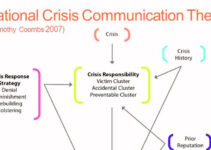PR crisis management outlines a set of methods and processes to decrease the damage from any type of disruptive event and crisis that would jeopardize and negatively impact the company’s reputation. Today, we’ll discuss crisis management strategies in public relations; steps involved in preparing, PR crisis situations, and PR crisis management strategies.
Public Relations Crisis Situations
- Lawsuits and claims against the company
- Top management accused of abuse, racism, and other inappropriate behaviors
- Product, service, and company’s actions are harming customers
- Death and injury of employees and workers
- Mass public and service outrage
Preparing for the Public Relations Crisis
- Building a crisis management with clear roles and responsibilities
- Selecting the company’s right spokesperson that would speak on its behalf
- Developing a comprehensive crisis plan before the crisis hits the company
- Know your responses before and select the right communication channel
- Tracking and managing your reputation online over social media channels with reviews and customer feedback
Crisis Management Strategies in Public Relations
Let’s discuss some of the main crisis management strategies in public relations and they’re as follows;
Recognizing the Problem
First of all, you should correctly recognize the disruptive situation as a crisis or just an ordinary problem. It is because not every small disruption is a crisis that requires the CEO, top management, and PR spokespersons’ attention. While analyzing the crisis, you should know the overall impact of the crisis on the company’s reputation in the long term. Some situations and disruptions are ordinary and others have a negative brand reputation impact.
The best possible strategy for reputation management is doing nothing in the early stages, and learning from the situation.
Quickly Responding
If you are dealing with a crisis situation, then it is significant to keep in mind that time is the key and you react fast. The sooner you respond and address the crisis, the more control you will have over the media narrative. You should avoid wasting time over crafting the message. Therefore, you should employ read-made generic messages to let the public know that you are managing the crisis. Use social media platforms, issue official statement, video, or a blog to let people know that you are taking steps to manage the crisis.
Recognizing First Response
You should conduct training programs for employees to let them know that you have full control over the crisis. It is necessary to have a company spokesperson with clear roles and responsibilities. Social media channels and customer support services are usually the first response. They would directly connect with the customers; the public could easily respond to the PR issues if there is an inconsistency.
If there a negative opinions and views of customers on social media channels, your PR and media team recognizes it. They should quickly take steps to protect and manage the company’s reputation. If the crisis situation is aggravating, then it is necessary to have the company’s top management and leadership board with the crisis communication. While issuing the press release and media messages, your focus should be on managing the press release and media messages.
Analyzing Crisis Event
Your expert media professionals should analyze the crisis situation. This is because every crisis situation requires a different type of strategic situation. The PR team should perform the damage risk analysis, and develop the appropriate response to the crisis situation. Once the PR and crisis team have decided what to do and what to say, then you should start acting along with it.
Developing a Crisis Action Plan
Once you have issued the official holding statement on various media channels, then it gives you sufficient time to develop a comprehensive action plan. The PR media message response is different and relevant to the industry, it should comply with the industry standards and regulations.
You should be honest and transparent with your crisis communication response; avoiding and playing the blame game would aggravate the situation. Accepting the mistakes and acknowledging the situation would send the message that you’re a mature organization.
Collaborating with Influencers
If your organization is receiving criticism from the public, then you should find the people who would speak up for its credibility and authenticity. Your top first priority should be the public influencers that have a significant mass following and their brand endorsement during the crisis means a lot to the company.
PR Crisis Analysis
A common sense point is that you could learn a lot from the previous mistakes of the company. It is significant to revise and re-analyze the crisis communication plan. You should analyze the PR crisis management response of the company. It lets you know whether the crisis response team requires any additional training or not.
Conclusion: PR Crisis Management Strategies |Crisis Communication Strategies in PR
After an in-depth study of the crisis management strategies in public relations; we have realized that PR plays a key role during the crisis. If you are learning about the PR crisis management strategies; then you should keep in mind the abovementioned steps involved for preparation and best practices to deal with the crisis.
Ahsan is an accomplished researcher and has a deep insight in worldly life affairs. He goes Live 3 days a week on various social media platforms. Other than research writing, he’s a very interesting person.


